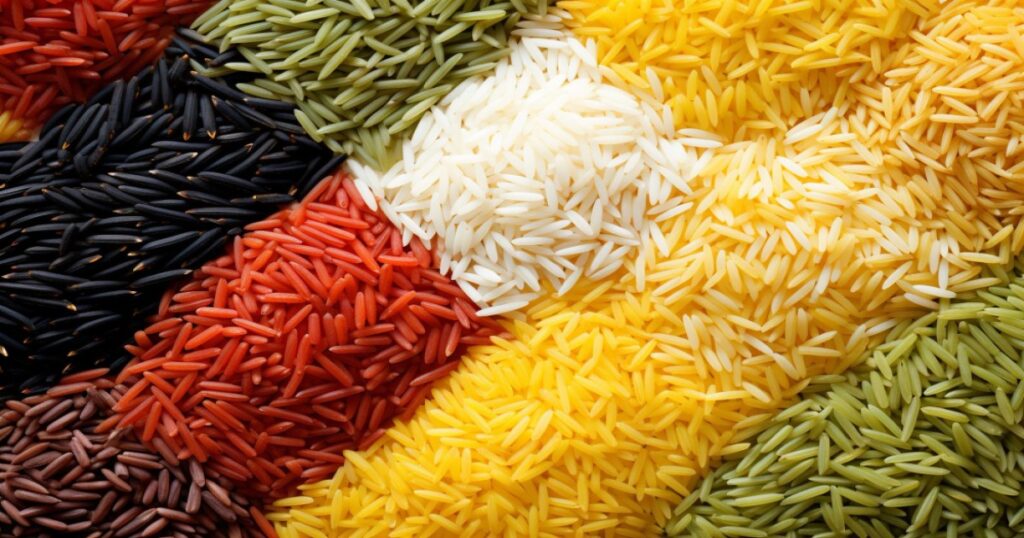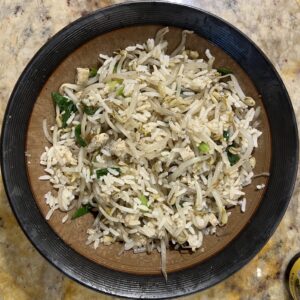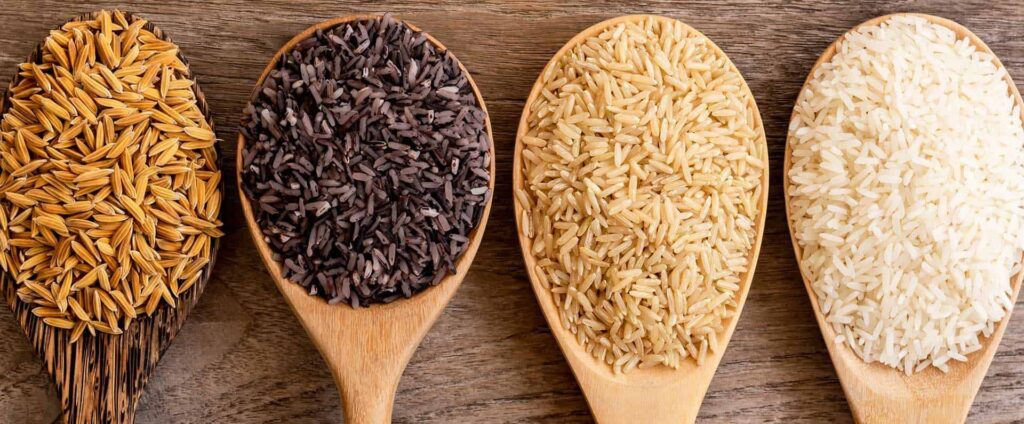Rice is warm, comforting, and surprisingly simple to prepare once you learn the basics. Whether you’re cooking it as a side dish, for a hearty main dish, or as part of a flavorful recipe, mastering the art of cooking rice can elevate your meals. With just a few simple steps and a little practice, you’ll be able to cook perfect rice every time. Plus, adding your own personal touch can make all the difference, transforming a basic dish into something special. Let’s dive into the steps to cook rice with confidence and a bit of flair!

How to Cook Perfect Rice
- Choose Your Rice
Pick your favorite type of rice – white, brown, jasmine, or basmati. Each has its unique flavor and texture. - Rinse the Rice
Place the rice in a fine-mesh strainer and rinse it under cold water until the water runs clear. This removes excess starch and prevents the rice from sticking together. - Measure and Add Water
Use the following water-to-rice ratios for typical results:- White rice: 1:2 ratio
- Brown rice: 1:2.5 ratio
- Jasmine rice: 1:1.75 ratio
- Basmati rice: 1:1.5 ratio
- Adjust for Texture
For a firmer, chewier texture, use these ratios: (more)- White rice: 1:1.25 ratio
- Brown rice: 1:1.5 ratio
- Jasmine rice: 1:1.33 ratio
- Basmati rice: 1:1.33 ratio
- Boil the Water
In a medium saucepan, bring the water to a boil over medium-high heat. Optionally, add a pinch of salt or your favorite herbs and spices. - Add the Rice
Once the water is boiling, add the rinsed rice and stir gently to distribute it evenly. - Simmer
Reduce the heat to low, cover the saucepan with a lid, and let the rice simmer. Avoid lifting the lid during cooking to keep the steam in. - Cooking Time
Depending on the rice type, cooking times vary:- White rice: 15-20 minutes
- Brown rice: 40-45 minutes
- Jasmine rice: 15 minutes
- Basmati rice: 15-20 minutes
- Let It Rest
Once the rice is cooked, remove the saucepan from the heat. Let it sit, covered, for 5-10 minutes to allow the steam to finish cooking the rice. - Fluff and Serve
Use a fork to gently fluff the rice, then serve and enjoy your perfectly cooked grains!
Dos and Don’ts
Dos
- Rinse the Rice: Always give your rice a good rinse. It’s like washing off the day’s grime before bed – essential for a fresh start.
- Use the Right Water Ratio: Measure your water accurately to ensure perfectly cooked rice. A little extra water could lead to mush, and too little might give you crunchy bits.
- Let It Rest: Allow the rice to sit for a few minutes after cooking to achieve the best texture. Patience, as they say, is a virtue.
- Store Properly: Got leftovers? Store them in an airtight container in the fridge. When reheating, add a splash of water to bring back that moisture.
Don’ts
- Don’t Stir While Cooking: Stirring the rice while it’s cooking can break the grains and make it mushy. Think of it like letting a delicate cake rise – hands off until it’s done.
- Don’t Lift the Lid Too Often: Opening the lid releases steam, which is essential for cooking the rice evenly. It’s like opening the oven door while baking – not a good idea.
- Don’t Use High Heat: Cooking rice on high heat can cause it to burn or cook unevenly. Low and slow is the way to go.
Now, you’re all set to cook rice like a pro! Whether it’s a simple side dish or the base for a delicious stir-fry, perfectly cooked rice can elevate any meal. Enjoy every fluffy bite!

Rice with Bean Sprouts, garlic and Green Onions
.

We use the Zojirushi NS-LAC05 3-Cup Rice Cooker (see review), which we purchased many years ago. Although they no longer make this model, you can explore all the Zojirushi rice cookers on their website.
This rice cooker is an essential part of our kitchen. It can be used to make oatmeal, quinoa, bulgur, couscous, and more. Cooking grains in a Zojirushi is easy—just add rinsed grains and liquid, push a few buttons, and presto, your grains are perfectly cooked. There’s no need to monitor them, and they’ll stay warm for hours. It even has a timer, so you can set it to wake up to the fresh smell of grains cooking or have it ready when you get home from work.
The love of my life usually prepares our rice, combining different kinds of rice (Brown and Wild, Golden and Basmati, etc.) and herbs from out garden. Yum!
We purchase most of our rice at Ralston Family Farms – https://www.ralstonfamilyfarms.com/rice-varieties –
They describe their rice as Non-GMO, naturally gluten-free, American farm-milled rice – from our family to your table.
Order online, they have great customer service.
It’s our favorite rice!

Why Use Less Liquid?

back to top
Using less liquid to cook rice is a method that some cooks swear by, and it can result in rice that is perfectly cooked with a firmer texture. Here’s a deeper dive into why and how less liquid can be used successfully in cooking rice:
- Fluffier Texture: For certain types of rice, such as basmati, jasmine, or even short-grain rice, using less water can result in fluffier grains that don’t clump together. These varieties of rice have a natural ability to separate into individual grains when cooked with less water, creating a desirable light and airy texture.
- Preserving Grain Integrity: When you use less liquid, the rice tends to absorb it more efficiently, allowing the grains to cook evenly without becoming soggy. With the right water-to-rice ratio, the rice will be tender but not overly soft, retaining its structural integrity.
- Preventing Mushiness: Using too much liquid can cause the rice to become mushy, especially with delicate varieties like jasmine rice or basmati. Less water ensures that the rice cooks through without losing its distinct texture and flavor. This is particularly important for dishes where you want the rice to maintain its shape, such as pilafs or biryanis.
- Faster Cooking Time: With less water, the rice tends to cook faster because it doesn’t need to absorb as much liquid. This can be especially helpful when you’re in a rush or trying to save time while cooking. It also reduces the chances of the rice overcooking or getting too soft during the process.
- Concentrated Flavor: Less liquid often leads to a more concentrated flavor in the rice. Since the rice absorbs all of the liquid during cooking, the flavor from the broth, seasonings, or even salt is more concentrated. This results in rice that is more flavorful rather than diluted by excess water.
How to Use Less Liquid:
- Adjusting Ratios: Depending on the type of rice you’re using, you’ll want to decrease the liquid to a ratio that fits the variety’s needs. For long-grain rice like basmati or jasmine, a 1:1.5 ratio (rice to water) may work well, while for short-grain rice, you might go with 1:1.25. These ratios reduce the amount of water but still allow the rice to absorb enough for even cooking.
- Absorption Method: The absorption method is ideal when using less liquid. In this method, the rice is cooked in just the right amount of water that it can absorb during the cooking process, without needing to drain any excess liquid. It’s crucial to stick to the precise ratio for this method to prevent the rice from drying out or burning.
- Rinse Your Rice: Rinsing rice before cooking it removes excess starch, which can make the rice sticky and clump together. This is especially important when cooking with less liquid because rinsing ensures the rice will cook evenly without becoming too starchy or gooey.
- Simmering, Not Boiling: When cooking with less water, it’s important to keep the heat low and let the rice simmer gently rather than boil. Boiling with less liquid can lead to uneven cooking or burnt rice at the bottom of the pan. Covering the pot with a tight-fitting lid and cooking on low heat will allow the rice to absorb the liquid without burning.
- Let it Rest: Once the rice has finished cooking, let it sit covered for about 5–10 minutes before fluffing. This resting period allows the rice to finish absorbing any remaining moisture and ensures that the grains separate easily.
Ideal Rice Types for Less Liquid:
- Basmati Rice: This fragrant, long-grain rice does best with a 1:1.5 ratio of rice to water. Using less liquid helps maintain its fluffy texture.
- Jasmine Rice: Another long-grain rice that requires less water to avoid being too soft or sticky. A 1:1.5 ratio usually works well.
- Short-Grain Rice: While short-grain rice has more starch, it can still benefit from less liquid when using the right ratio, especially when making dishes like sushi or rice cakes where a slightly firmer texture is desired.
- Wild Rice: Though not technically rice, wild rice requires less liquid compared to other varieties. It’s best cooked with a 1:2 ratio of rice to water.
Potential Pitfalls of Using Too Little Liquid:
- Dry Rice: If you don’t use enough liquid, your rice could come out dry, undercooked, or even burnt. This is particularly problematic with thicker grains like brown rice or when using the stovetop method without a lid.
- Uneven Cooking: Without enough liquid, the rice may not cook evenly, leading to some grains being hard and others overcooked. Consistent ratios and proper simmering are crucial to avoid this issue.
Conclusion:
Using less liquid can lead to perfectly cooked, fluffy rice with distinct grains and enhanced flavor. It works especially well with long-grain rice varieties that naturally separate when cooked. However, it’s important to find the right balance and adjust the ratio according to the type of rice you’re cooking to avoid dryness or undercooking. The key is experimenting with different amounts of water to find the texture you prefer, and once you master it, you can consistently create rice that’s just right!